
Yamabushi training in offers a rare immersion into Japan’s ancient Shugendō tradition (Photo Credit: Kodo Travel)
A rhythmic drum beat, accompanied by deep-throat singing, echoes through the icy fjords of East Greenland as Inuit performers share their 4,500-year-old drum dance with guests. Thousands of kilometres away, a family is captivated by the Sahara’s celestial beauty, learning about local legends from a Bedouin guide. Meanwhile, a corporate executive trades boardrooms for barefoot ascents in Japan’s sacred Yamagata mountains, training with 13th-generation Yamabushi Master Hoshino to challenge his body and mind. These aren’t experiences found on typical “must-do” lists. They’re transformative journeys, crafted by local experts for discerning travellers. Today’s travellers seek more than observation—they want participation.
Changing Travel Priorities
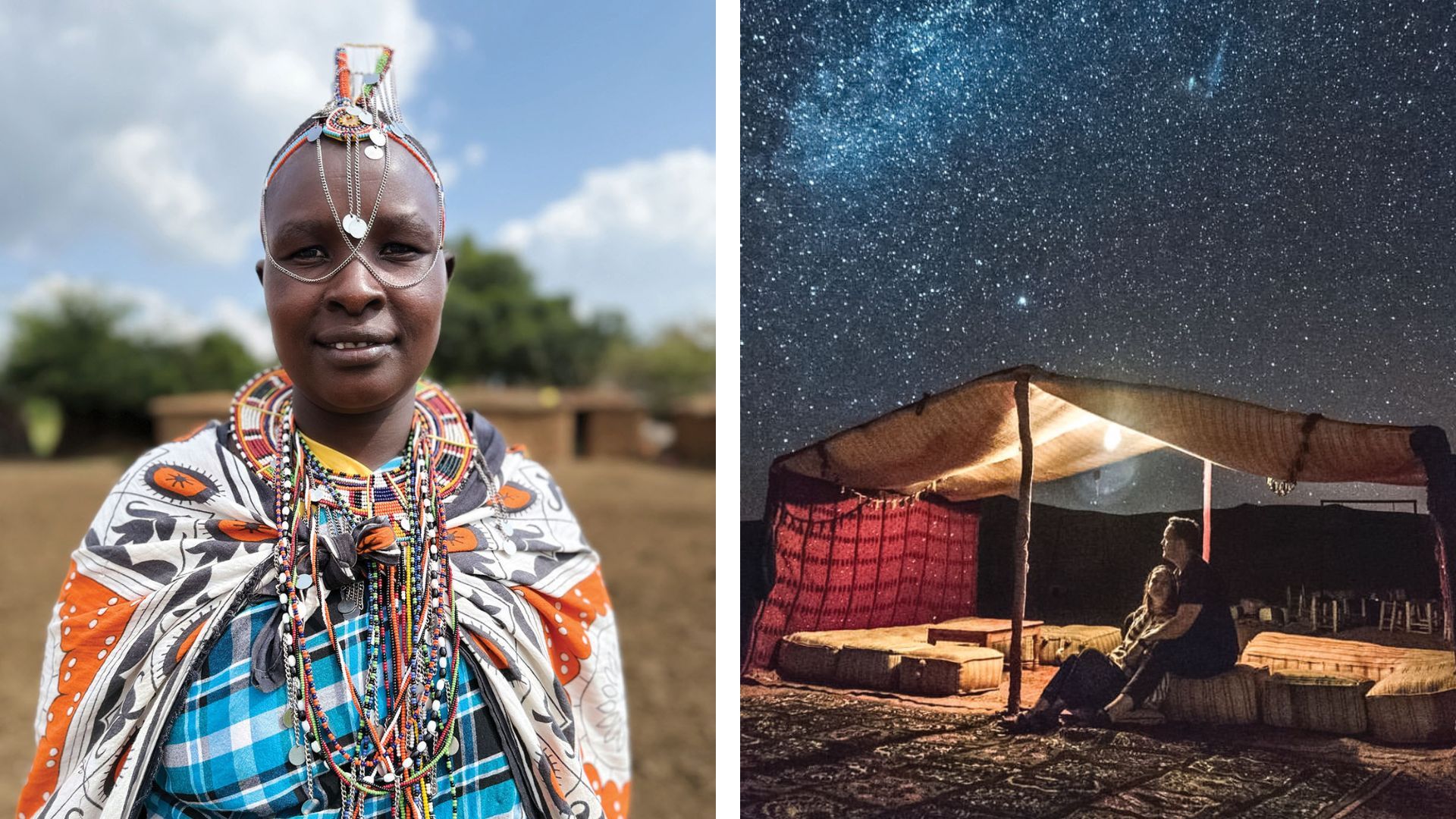 From Left: In Kenya’s Maasai Mara, members of the Maasai community share their vibrant culture with visitors; A couple embraces the tranquillity of the Sahara Desert, taking in the vast, golden dunes and the serene beauty of the endless horizon (Photo Credit: Archana Singh, Travel Organiser)
From Left: In Kenya’s Maasai Mara, members of the Maasai community share their vibrant culture with visitors; A couple embraces the tranquillity of the Sahara Desert, taking in the vast, golden dunes and the serene beauty of the endless horizon (Photo Credit: Archana Singh, Travel Organiser)
Siddharth Talwar, a Delhi-based musician and frequent adventurer, embarks on at least five international trips annually and follows a simple travel mantra: “Culture during the day, party by night”. Whether exploring the history of the Teotihuacán Pyramids in Mexico with a local historian or joining the EXIT Music Festival in Novi Sad, Serbia with local artists, Talwar ensures his travels are more enriching than just snapping Instagram-worthy photos. “I travel not to escape or boast, but to immerse myself in diverse experiences—dining with locals or jamming with strangers.
Often, these travels inspire both my work and personal growth, without me even realising it.” Travel is shifting from outward indulgence to inward exploration. A decade ago, luxury travellers sought five-star hotels in Kyoto. Today, they rise at dawn to meditate with Zen monks in a 300-year-old temple.
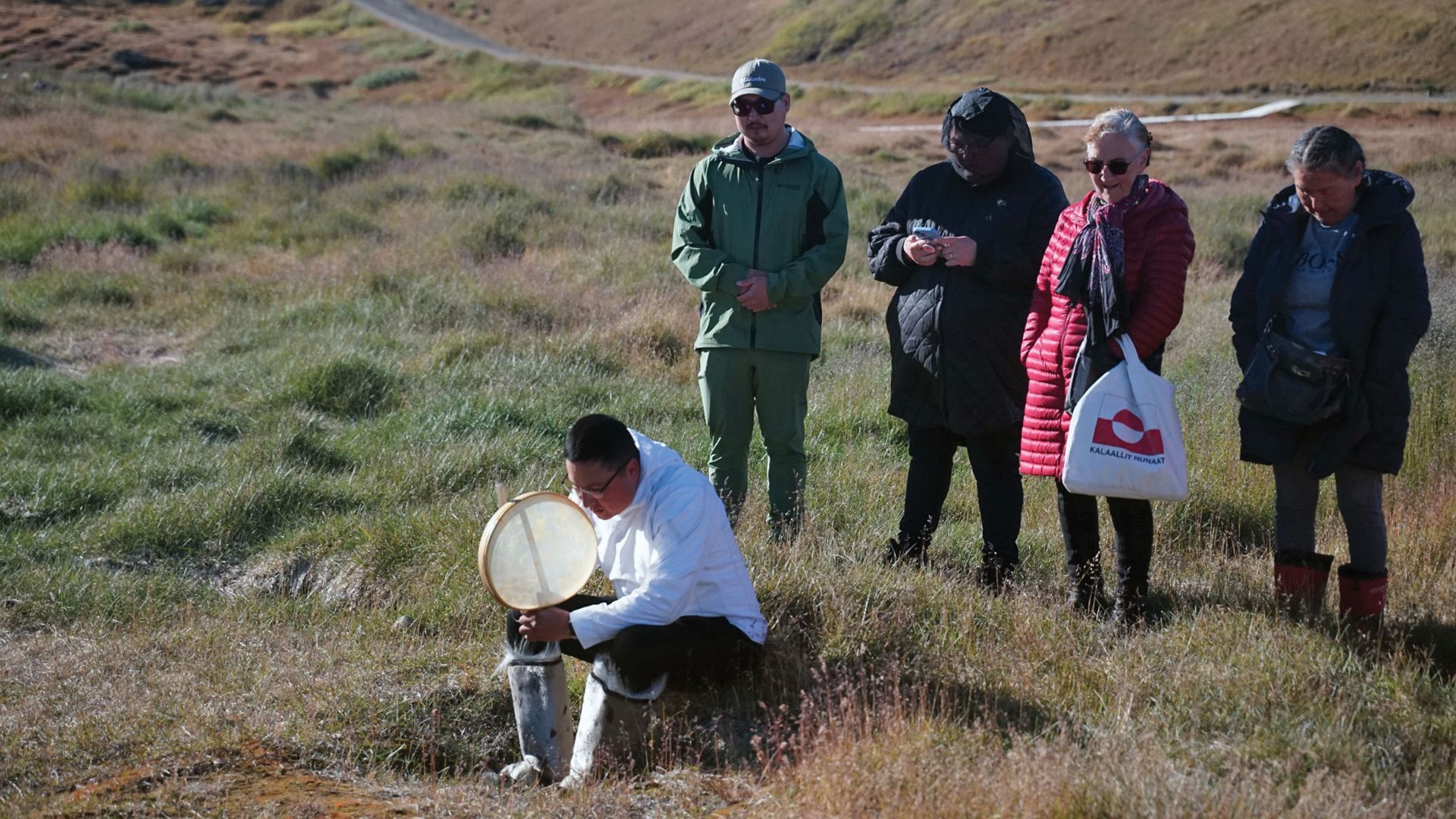 Inuit performers in Tasiilaq, East Greenland, showcase the traditional drum dance—a 4,500-yearold ritual blending rhythmic beats and throat singing (Photo Credit: Archana Singh)
Inuit performers in Tasiilaq, East Greenland, showcase the traditional drum dance—a 4,500-yearold ritual blending rhythmic beats and throat singing (Photo Credit: Archana Singh)
Ai Munakata, CEO of Tour Designers based in Okinawa, underlines a notable shift in evolving travel preferences. “Travellers, particularly high-net-worth international individuals, are no longer satisfied with luxury hotels and fine dining. They seek more local, meaningful, unique, exclusive and culturally enriching experiences.”
Siham Lahmine, owner and cultural curator at Morocco Travel Organiser, echoes this sentiment: “Travellers aren’t looking for surface-level experiences. They want to meet local farmers, learn about Morocco’s solar projects, engage with politicians, and spend time in coffee shops with locals, having meaningful conversations. They choose to travel during Ramadan to immerse themselves in the local traditions and celebrate alongside the community.”
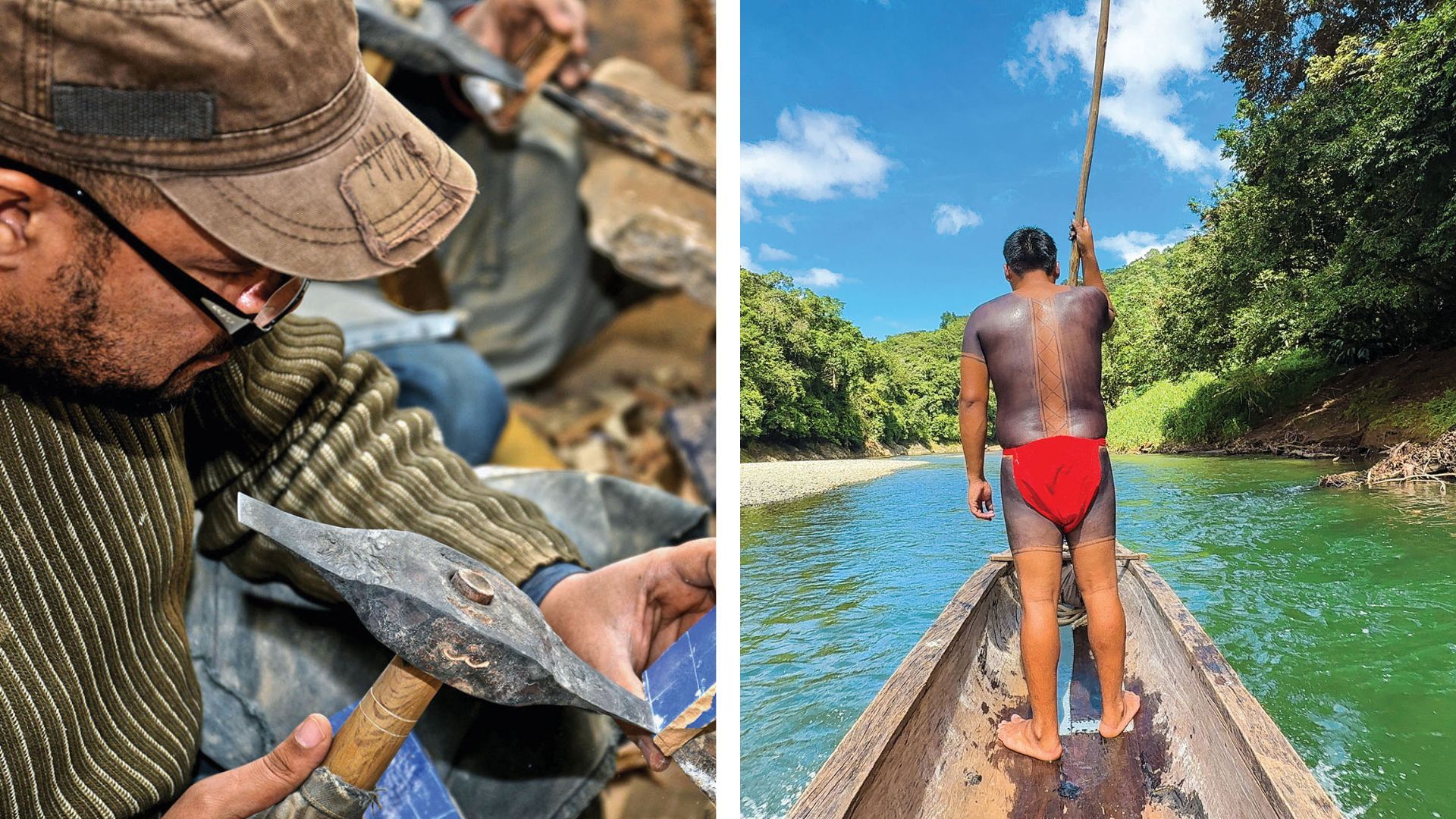 From Left: Moroccan craft workshops offer a deep dive into the country’s artisanal traditions under the guidance of master craftspeople; An Emberá tribesman skillfully navigates the Chagres River in Panama, using a traditional
From Left: Moroccan craft workshops offer a deep dive into the country’s artisanal traditions under the guidance of master craftspeople; An Emberá tribesman skillfully navigates the Chagres River in Panama, using a traditional
dugout canoe (Photo Credit: Archana Singh)
This trend is gaining momentum globally. According to Future Market Insights, the global cultural tourism market is expected to double from $1.2 trillion in 2025 to $2.6 trillion by 2035. “Revenge travel” has faded, replaced by a more thoughtful approach. Instead of travelling recklessly, consumers are slowing down and opting for more meaningful experiences. The WTM Global Travel Report confirms that the demand for authentic, unique travel is fuelling the rapid growth of cultural tourism.
Redefining The Experience Economy
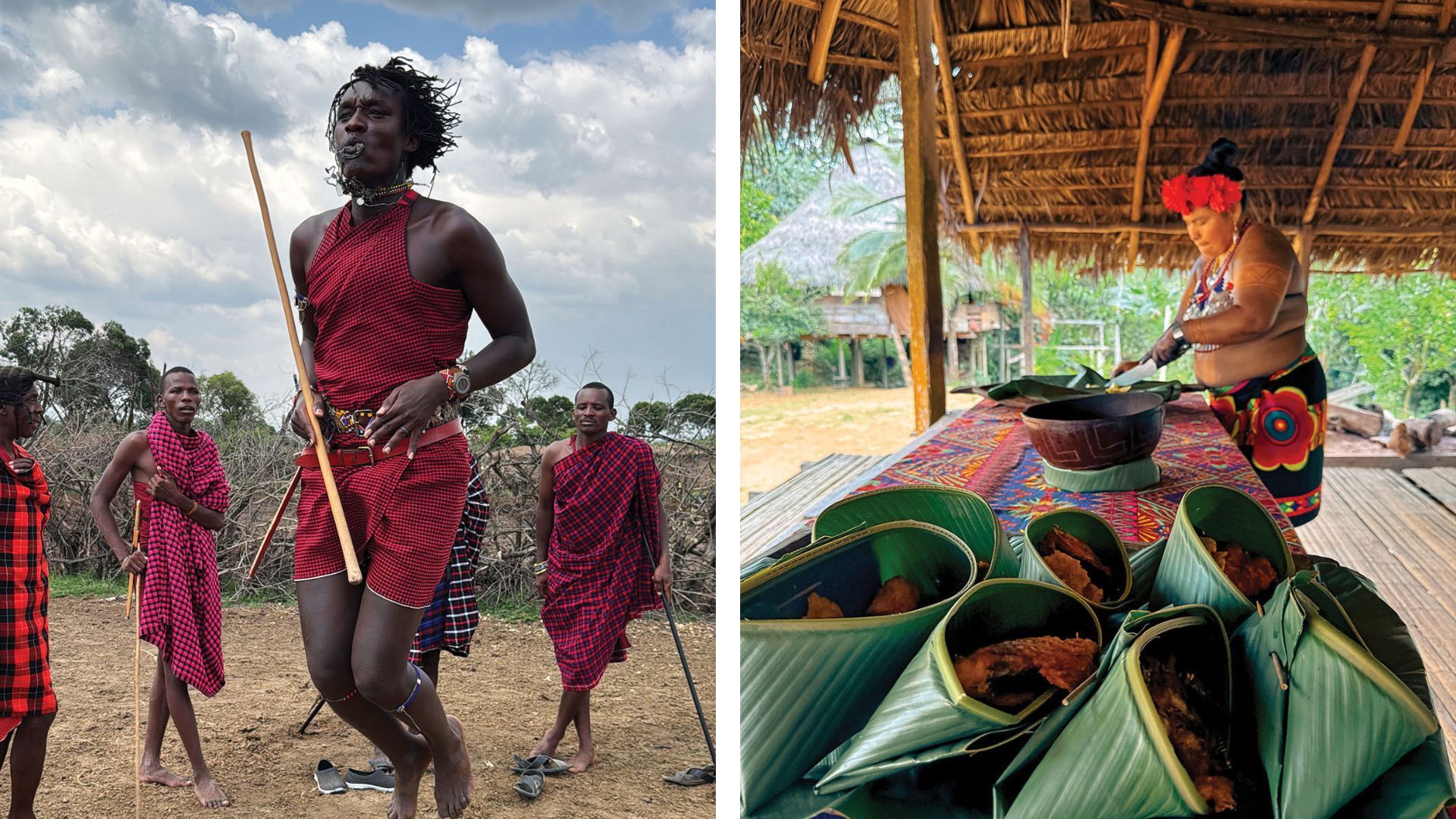 From Left: The Maasai tribe’s iconic red shuka and jumping dance celebrate a deep connection to the land and its wildlife; An Emberá woman prepares a traditional meal using ingredients sourced from the surrounding rainforest
From Left: The Maasai tribe’s iconic red shuka and jumping dance celebrate a deep connection to the land and its wildlife; An Emberá woman prepares a traditional meal using ingredients sourced from the surrounding rainforest
In 2024, the Japan National Tourism Organisation (JNTO) reported 36.9 million foreign visitors. The surge in tourism to Tokyo, Kyoto, and Osaka has led to overcrowding, disrupting locals’ daily lives and diminishing the quality of travel experiences. To alleviate congestion in popular tourist areas and promote a balanced distribution of visitors nationwide, the Japanese government is focusing on high-quality cultural and adventure experiences in less-visited areas like Hokkaido, Tohoku, and Okinawa.
Munakata notes a rising interest in Okinawa as a wellness destination. The Tour Designers CEO explains, “In our tours, we collaborate with local residents and guides who offer first-hand insights into healthy living and food traditions that have made Okinawa one of the blue zones on Earth. Guests learn about our longevity secrets not as tourists but as participants in daily life.”
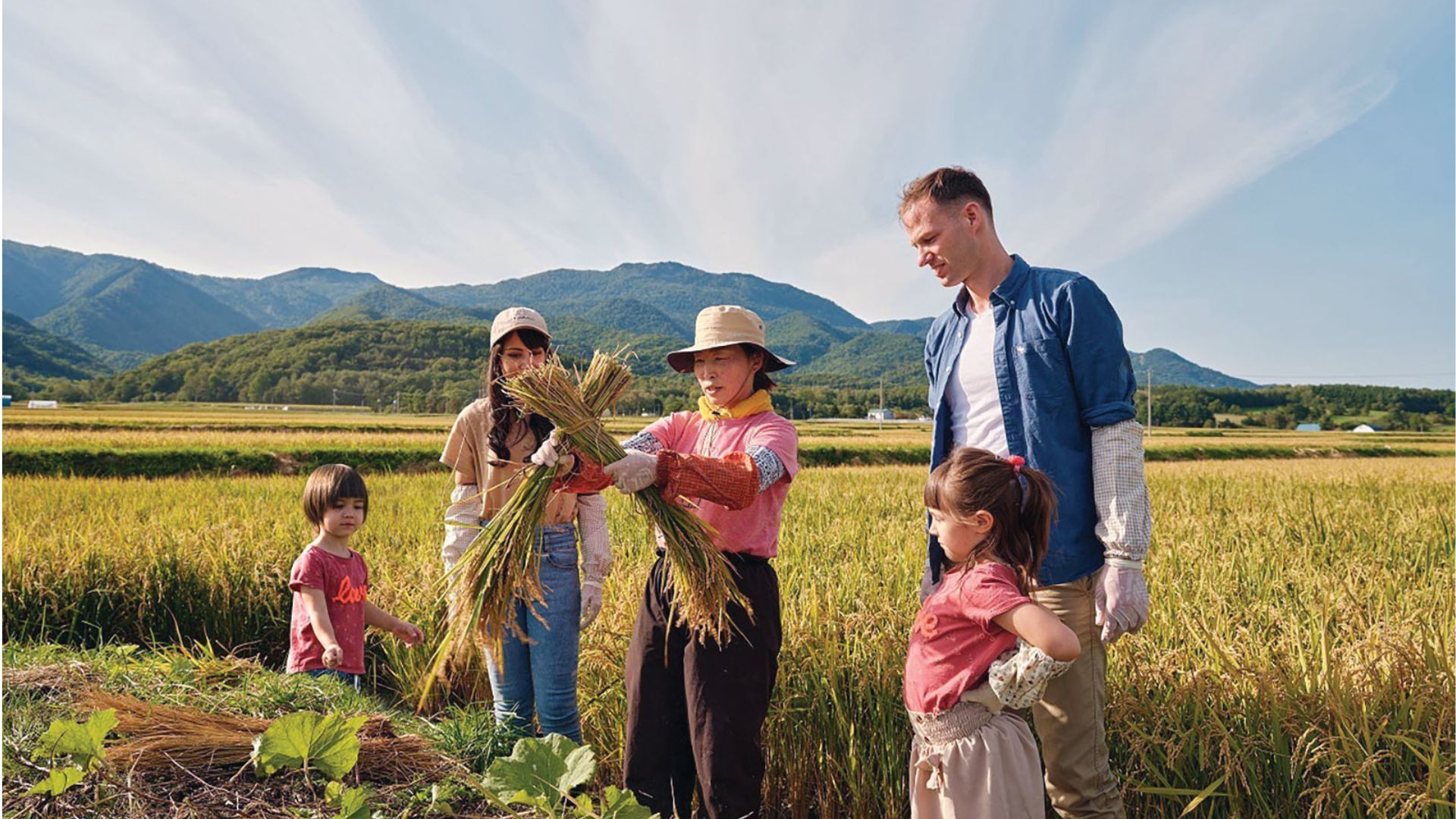 A family visiting a rice farm with a local farmer before learning how to make traditional mochi rice cakes (Photo Credit: Hokkaido Treasure Island)
A family visiting a rice farm with a local farmer before learning how to make traditional mochi rice cakes (Photo Credit: Hokkaido Treasure Island)
Similarly Kodo Travel specialises in active, culturally immersive tourism. They collaborate with rural communities to create bespoke, high-end and culturally rich experiences, train guides, and promote off-the-beaten-path destinations. One standout is the Yamabushi training in Dewa Sanzan, Yamagata Prefecture.
Project manager Tim Bunting explains, “Yamabushido takes Japan’s cultural immersion to new heights. It goes beyond observation; participants live the spiritual life of mountain hermits.” Even in Japan, the training is largely unknown, and participants are carefully selected. It involves hiking, meditation, reflection, and partaking in secret rituals in some of the most breathtaking landscapes of Japan.
Afterwards, participants often gain a new perspective and adopt more mindful ways of living. Japan’s focus is shifting toward long-term sustainability rather than short-term gains. Koichiro Suzuki, the president of Hokkaido Treasure Island Travel, shares a vision for the future: “In the next five to ten years, Hokkaido will not focus on attracting large numbers of tourists at low prices.
Instead, we will develop high-quality guide programmes and experiences unique to each region. Ultimately, both tourists and residents will benefit from Hokkaido becoming a sustainably developed luxury travel destination.”
Cultural Tourism And Conservation
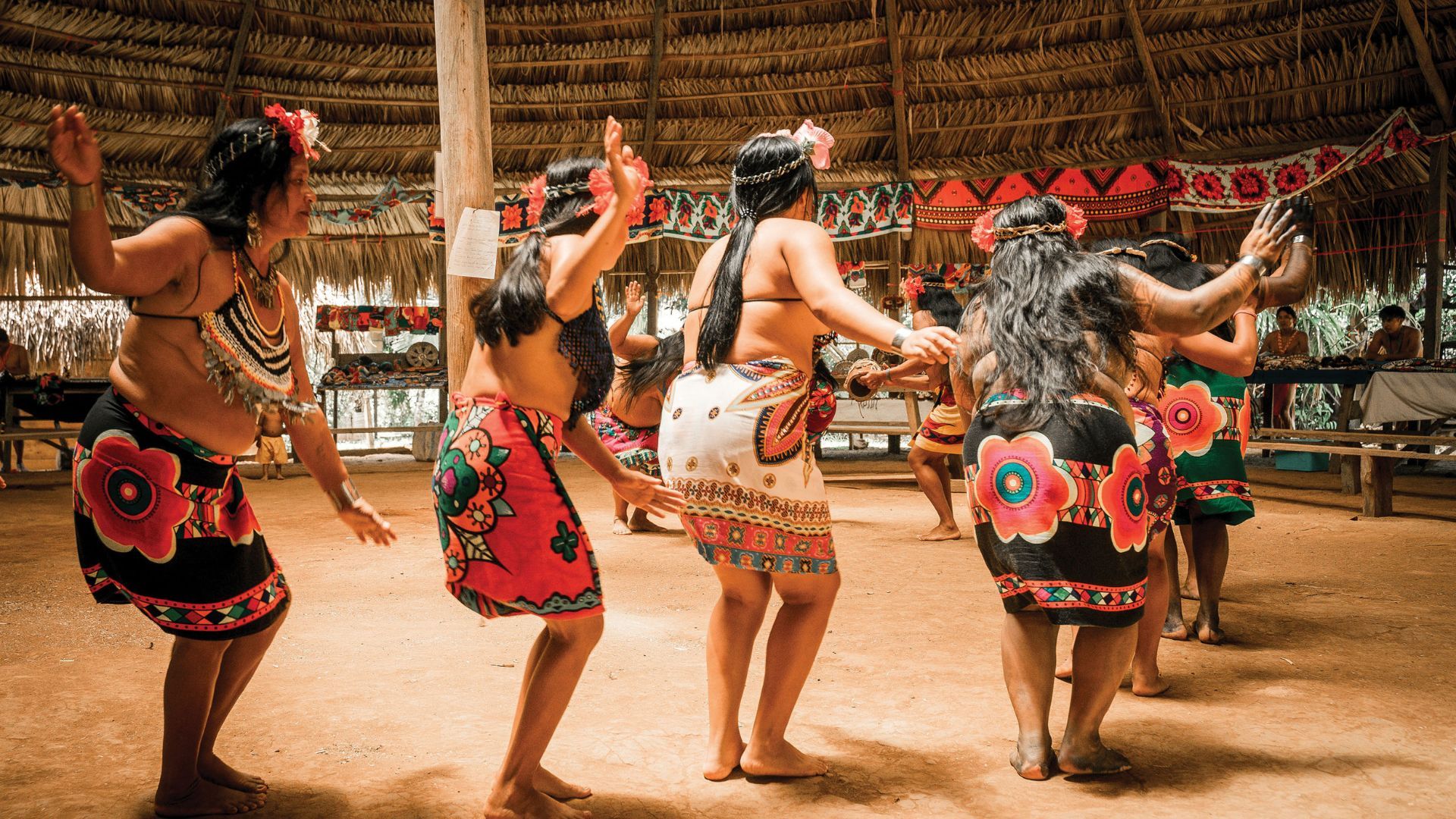 Emberá women perform a traditional dance in their riverside village in Panama, adorned in vibrant handwoven skirts
Emberá women perform a traditional dance in their riverside village in Panama, adorned in vibrant handwoven skirts
Cultural tourism is not only addressing over-tourism but also helping to preserve endangered wildlife and communities. Koleesh Kuluo, affectionately known as John, a safari guide at ONLYONE Africa, highlights how tourism supports the Maasai community, “Tourism has been integral to our lives since childhood. Growing up with wild animals taught us to respect and care for them. If they are safe, we are safe.”
He recalls a French traveller saying, “You have no idea how incredibly lucky you are to be born in the savannah. Nowhere else can you find the rich wildlife that Africa has. You need to protect it because there is no other Maasai Mara.” This realisation helped John understand how safeguarding wildlife offers greater rewards than the quick profits poachers make.
Tourism also safeguards the culture and well-being of indigenous people, whose livelihoods are deeply connected to wildlife. John adds, “Thanks to lodges, camps, and national reserves, we are able to study and find employment. When tourists come for a safari, they are also interested in learning about our culture. We invite them to participate in our jumping dance, show them how we live in Manyatta huts, and dress them in Maasai shuka (the traditional cloth) and jewellery. Thus, they help us preserve our culture, too.”
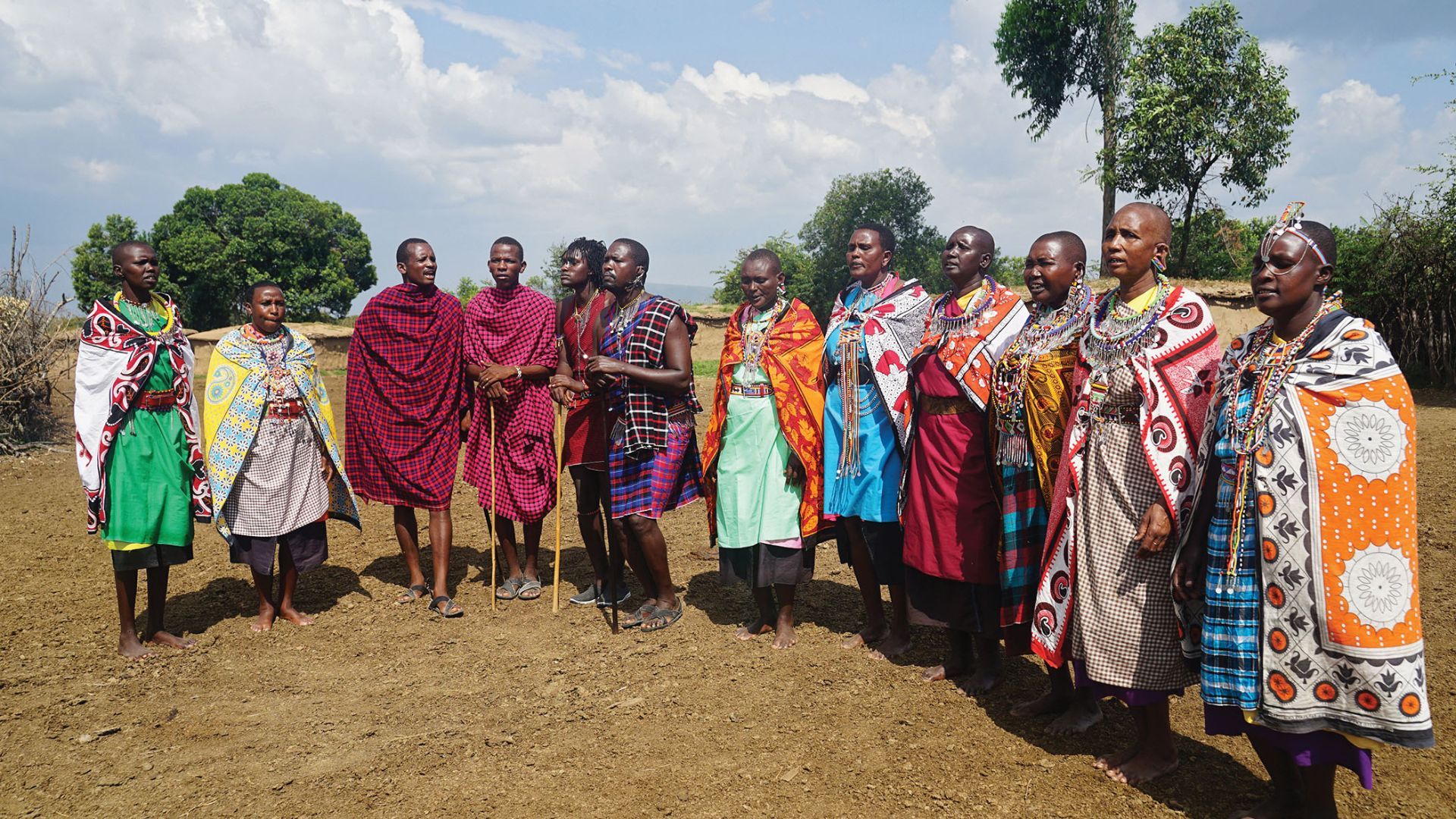 The Maasai people continue to live by their timeless traditions, embodying strength, and resilience
The Maasai people continue to live by their timeless traditions, embodying strength, and resilience
Cultural tourism is saving indigenous communities from extinction almost everywhere. Panama, often called the world’s bridge, faces challenges balancing cultural preservation with economic development. Christian Strassnig, founder of Cultour Panama, offers travellers the opportunity to experience the culture of the Emberá people. They are one of the seven indigenous groups officially recognised by the Panamanian government, and have lived along the riverbanks for centuries, hunting, fishing, and practising subsistence farming. Despite Panama’s independence in 1903, their struggles persist—land loss, deforestation, mining, and the illegal drug trade. Yet, as they say, adversity is the mother of necessity.
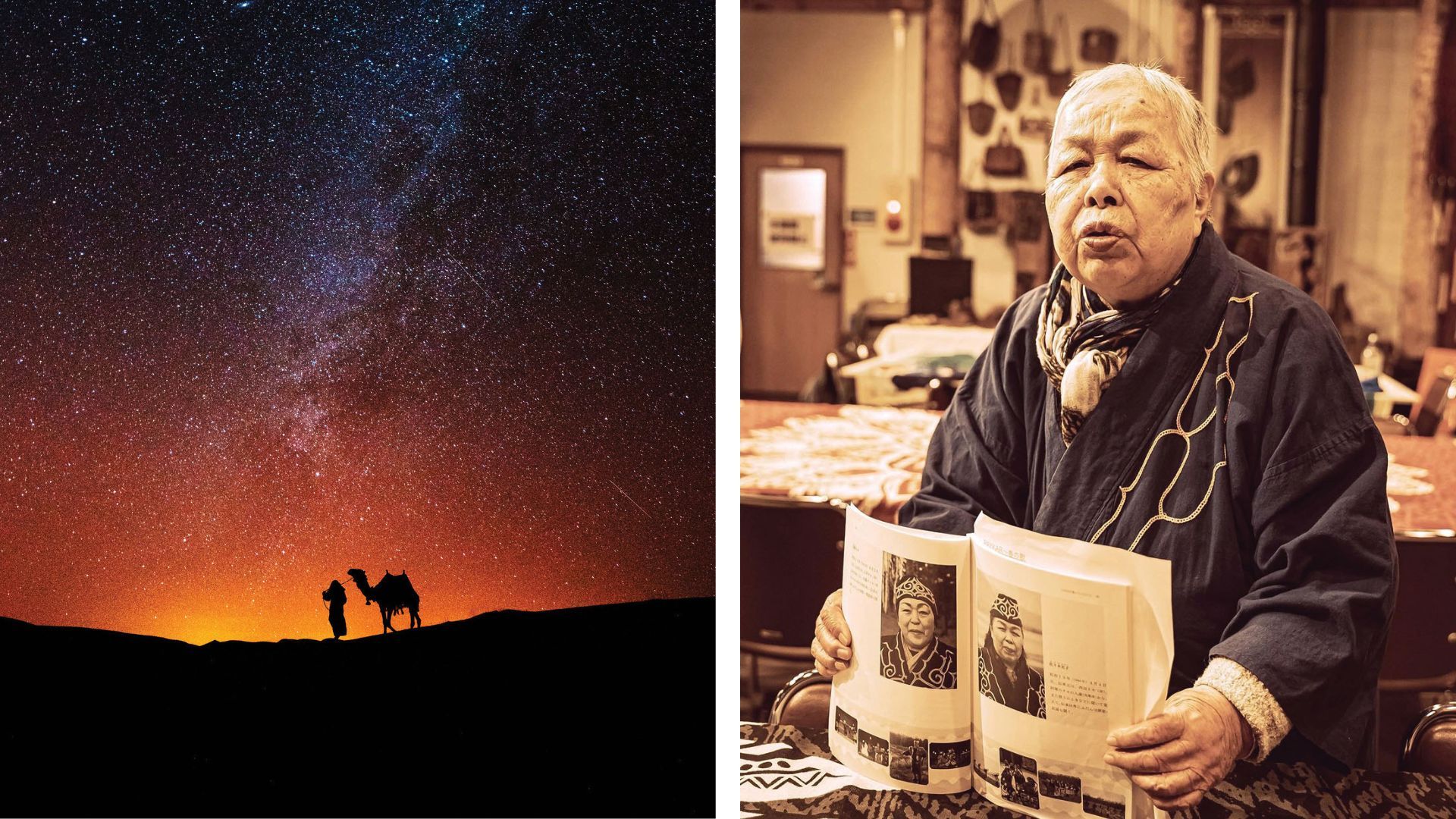 From Left: In the heart of Morocco’s Sahara, the stars seem to shine brighter than anywhere else on Earth; Kayoko Nishida-san, an 80-year-old Ainu woman known as Miyachan at Lake Akan, shares traditional Ainu culture and crafts
From Left: In the heart of Morocco’s Sahara, the stars seem to shine brighter than anywhere else on Earth; Kayoko Nishida-san, an 80-year-old Ainu woman known as Miyachan at Lake Akan, shares traditional Ainu culture and crafts
passed down by her elders in Hokkaido (Photo Credit: Propic/Getty Images; Archana Singh)
Strassnig explained how the Emberá used tourism as a way of preserving their indigenous way of life alive while earning a living. They allowed travellers to visit their homes, share meals gathered from the forest, tell their stories, sell handcrafted items, and showcase their culture through dance and music. As the money started coming in, young people began to appreciate their heritage instead of migrating to the capital city for menial jobs.
Beaming with pride, Strassnig shared, “Ecotourism emerged as their economic lifeline, protecting their unique cultural identity and practices. After a long battle, which is far from over, the Panamanian government has started supporting them by providing training, guidance, and promoting the Emberá at major tourism fairs worldwide.”
In a world where destinations are more accessible than ever, the most meaningful journeys aren’t defined by where you go, but by how you engage. Ultimately, true luxury in travel isn’t about exclusivity—it’s about connection.
Related: The Craft Shopping Guide: 20 Cultural Souvenirs That Bring The World Into Your Home
Note:
The information in this article is accurate as of the date of publication.
Written By
Archana Singh

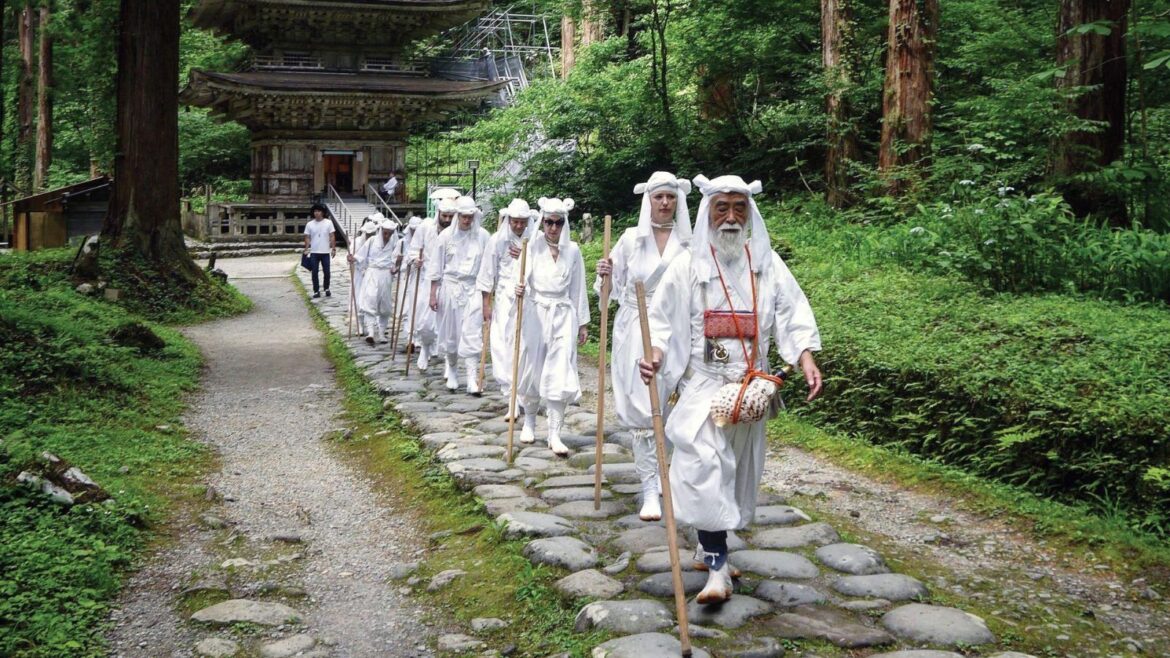
AloJapan.com